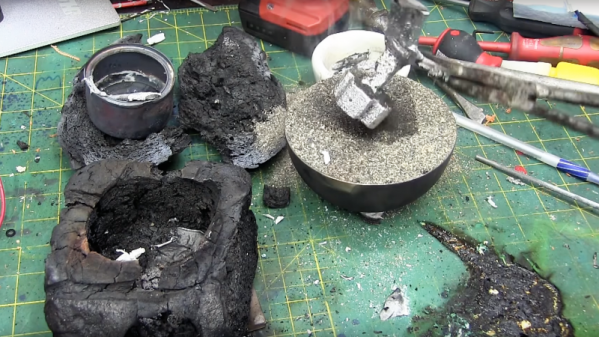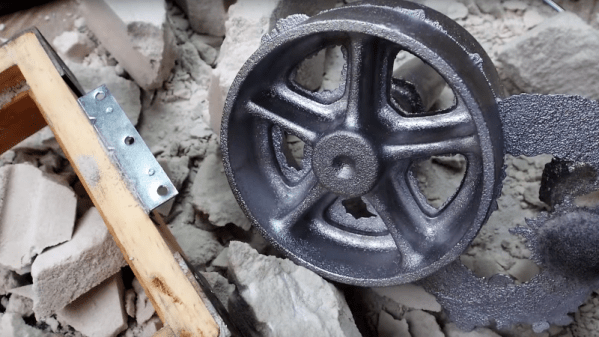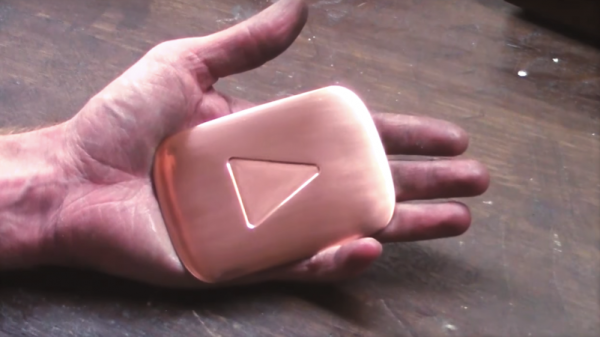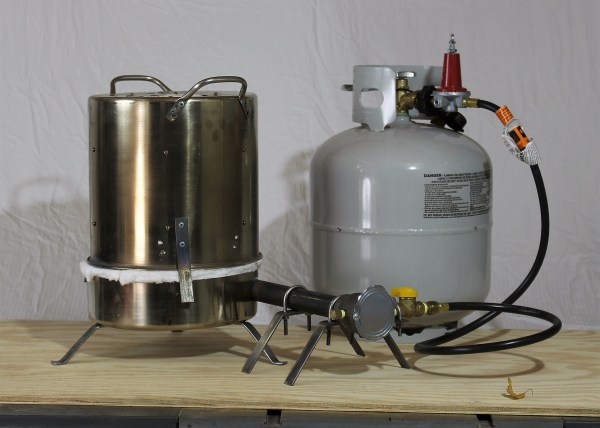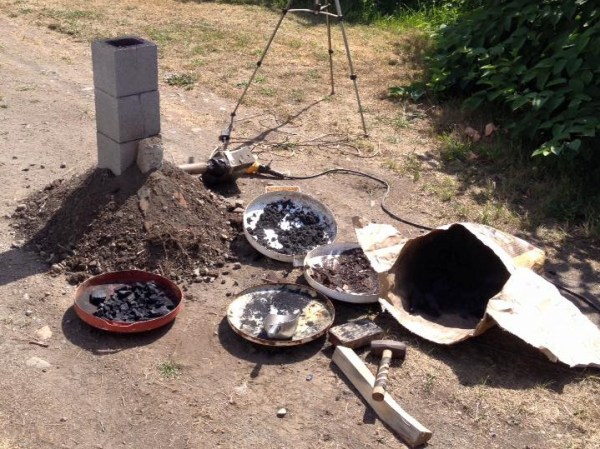Can you build a foundry out of a loaf of bread and a can of tuna fish? As it turns out, yes you can. And not only can you melt aluminum in said foundry but you can also make a mold from plain beach sand and cast a usable part.
Through the magic of backwoods engineering and that can-do Canadian attitude, [AvE] demonstrates in his inimitable style how a pyrolized loaf of sourdough bread can serve as a perfectly acceptable foundry, using a tuna can as a crucible. We covered [AvE]’s carbon foam creation process before and showed some of its amazing properties, including the refractory characteristics requisite for foundry service. Once reduced to carbon foam, the bread can easily handle the flame of a propane torch and contain the heat long enough to melt aluminum. And using nothing more than beach sand, [AvE] was able to lost-foam cast a knob-like part. Pretty impressive results for such a low-end, field expedient setup.
Normally we warn our more tender-eared readers about [AvE]’s colorful language, lest they succumb to the vapors when he lets the salt out. But he showed remarkable restraint with this one, even with his cutting mat aflame. Pretty SFW, so enjoy seeing what you can do with nothing.

